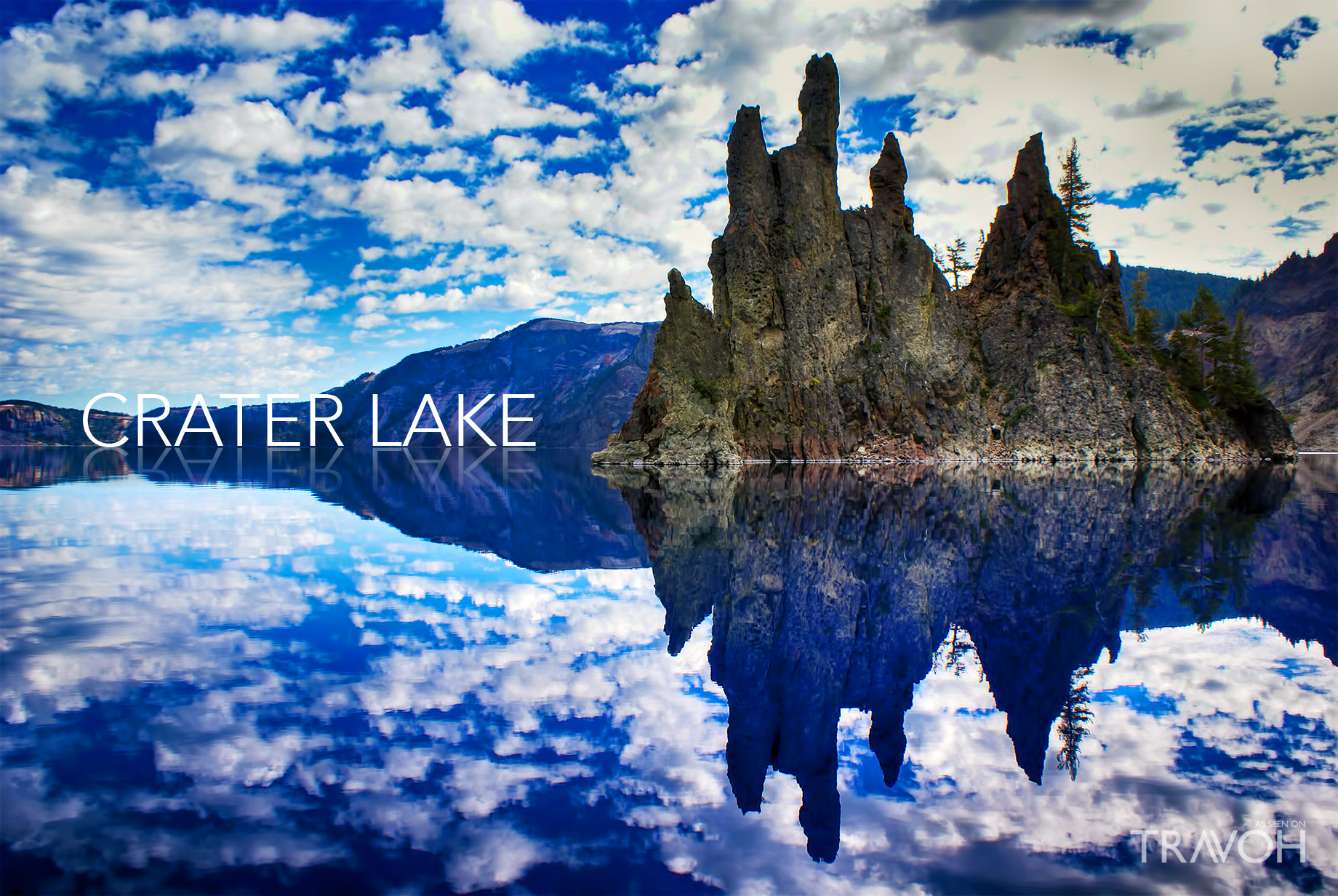
While the State of Oregon is most certainly known for its historic Oregon Trail and the largest expanse of coastal sand dunes in North America, the state is also home to America’s deepest lake named Crater Lake.
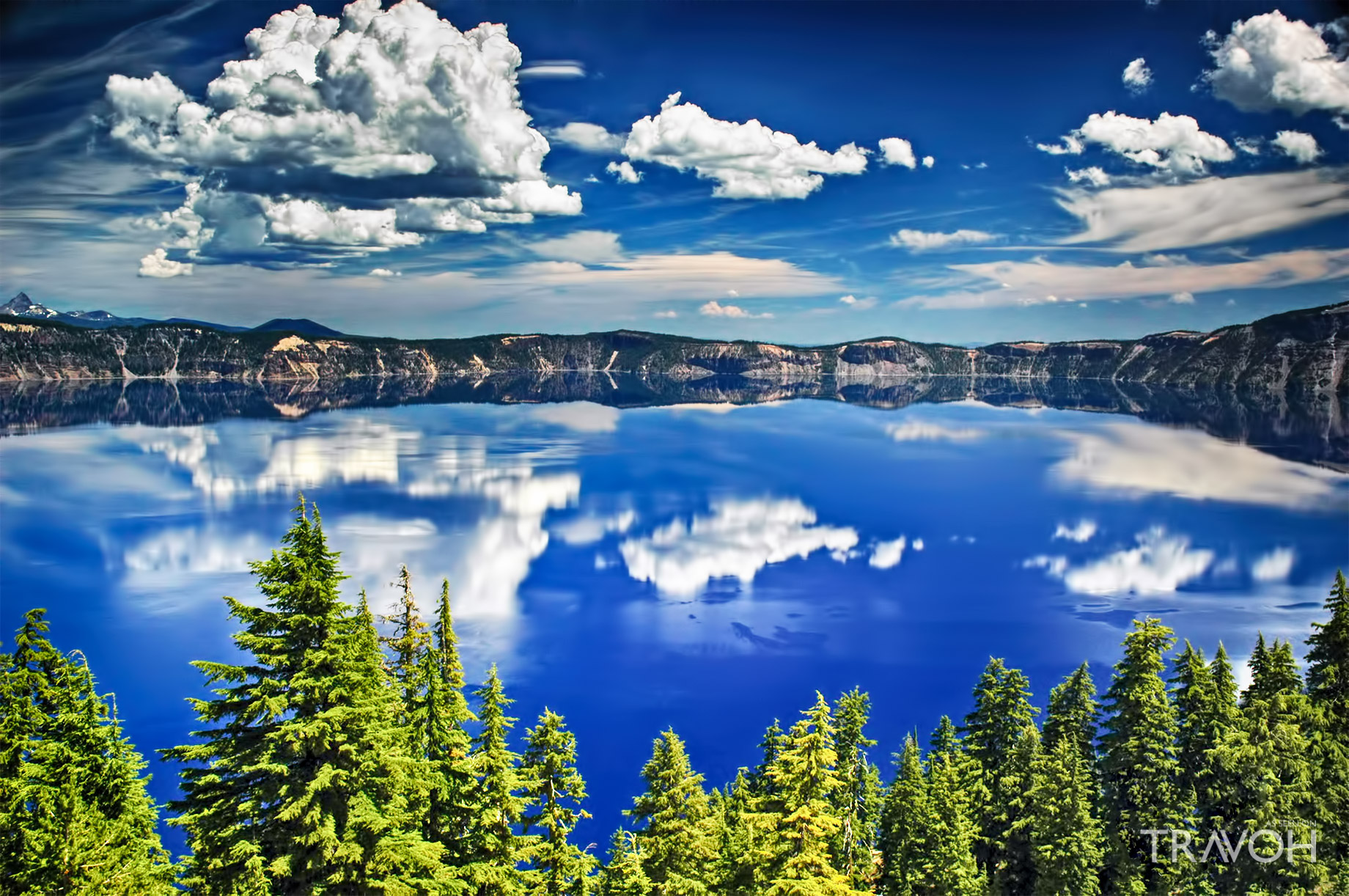
This caldera lake is the main feature of Crater Lake National Park and is famous for being the deepest lake in the United States and the second deepest in North America, after Great Slave Lake in Northwest Territories, Canada.
Crater Lake has a max depth of 1,943 feet (592 m). What classifies it as a caldera lake is the fact that it was formed by the collapse of the volcano Mount Mazama around 7,700 years ago.
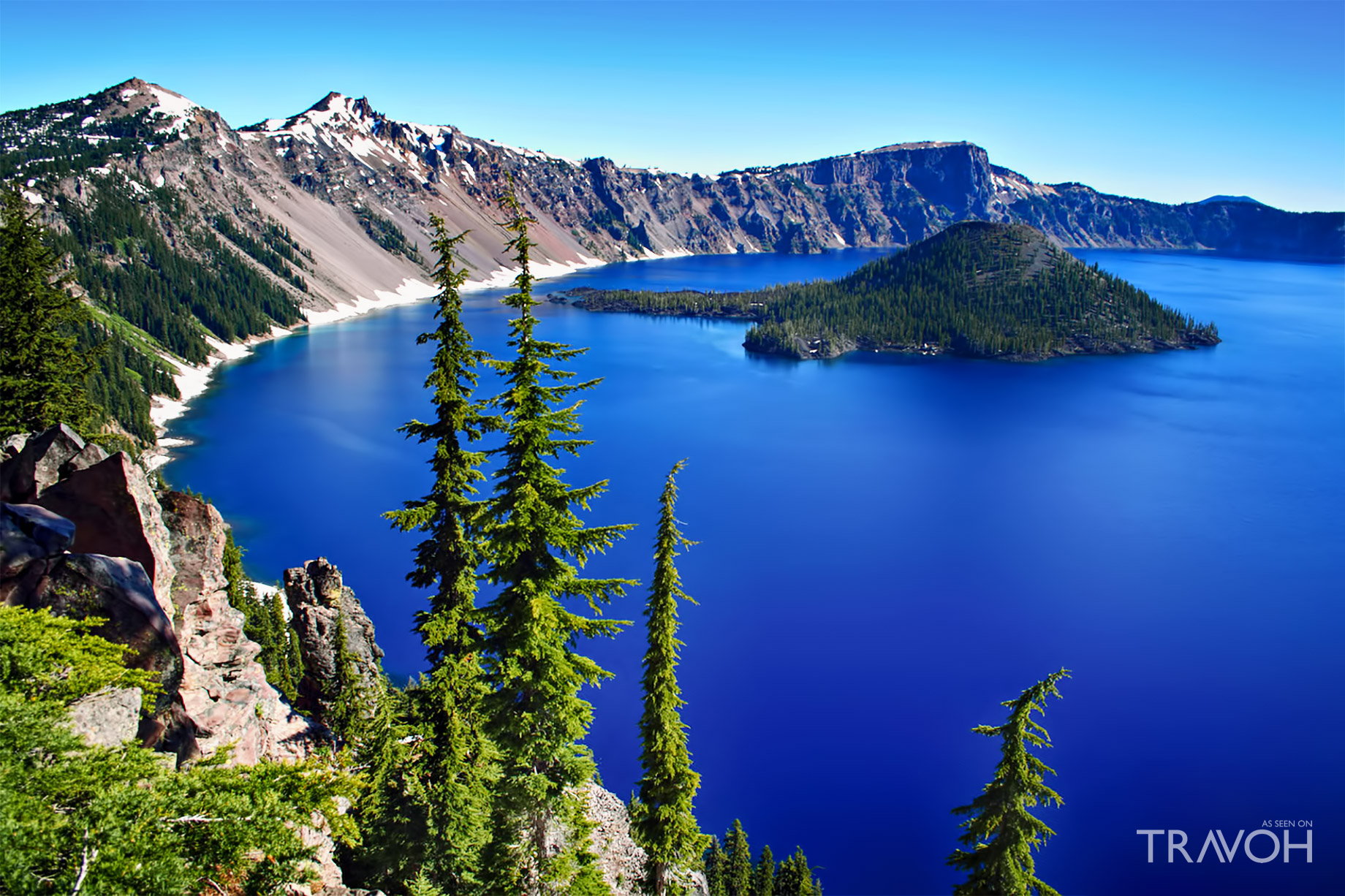
No rivers flow into or out of Crater Lake. Evaporation is compensated for by rain and snowfall at a rate where the total amount of water is replaced every 250 years.
With the influence of the North Pacific High, summertime is mild and dry, but winter is influenced by the powerful Aleutian Low, allowing for enormous snowfalls averaging 488 inches (12.40 m) each year and a maximum snow cover that averages 139 inches (3.53 m). Snow at Crater Lake usually does not melt until mid-July, allowing for glaciers to form on surrounding mountains.
The winter of 1949-1950 saw as much as 885.1 inches (22.48 m) of snowfall – a record that still stands today. The lowest recorded amount of snowfall came during the unsettled winter season of 1981-1982, with just 192 inches (4.88 m).
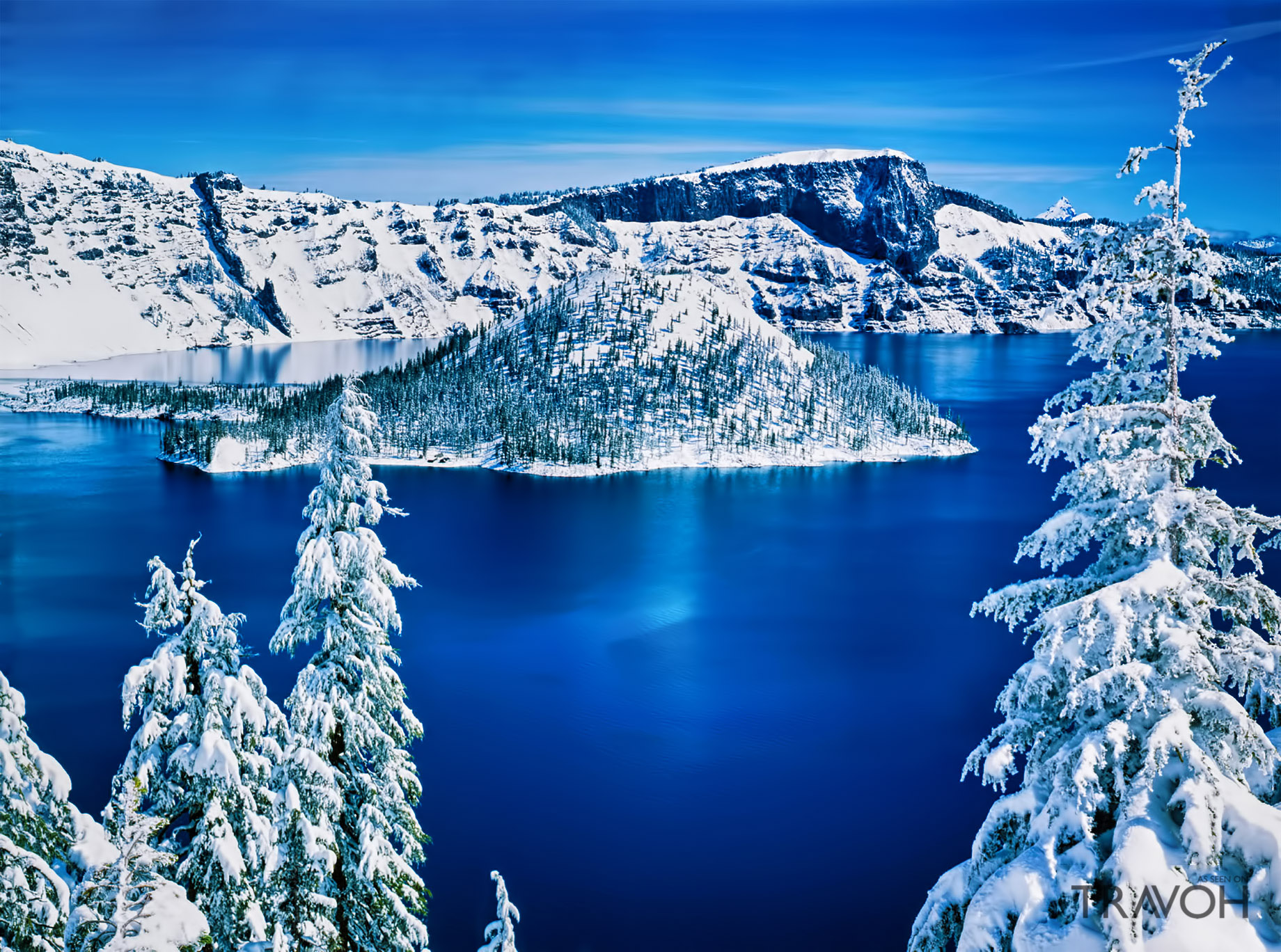
Crater Lake is picture perfect for panoramas with its crystal blue waters. Some of the purest and clearest waters are found at Crater Lake because of the absence of pollutants. Clarity readings by a Secchi disk have averaged between high-20 meter and mid-30 meter (80 to 115-foot) range records, which is very clear for any natural body of water.
No known indigenous fish exist at Crater Lake, but the lake was stocked from 1888 to 1941 with a variety of fish. Several species have since formed self-sustaining populations.
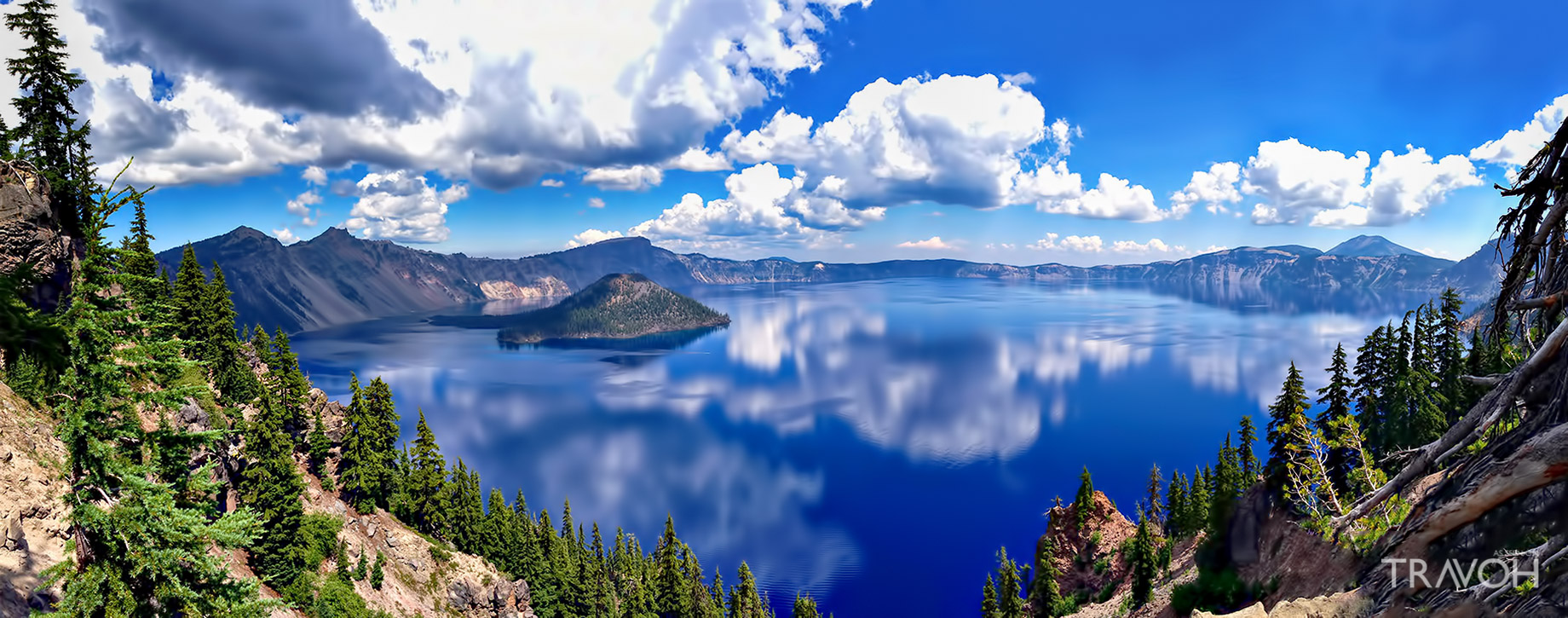
Two islands rise out of Crater Lake. The largest of the two is Wizard Island, which formed from a cinder cone that erupted after Crater Lake began to fill with water thousands of years ago.
The smaller island is named Phantom Ship, which is pictured at the top of this article with its natural rock pillar formation. It derives its name from its resemblance to a ghost ship. Surprisingly, Phantom Ship has seven different tree species growing on it with colonies of violet green swallows and several varieties of wildflowers and lichens living there.
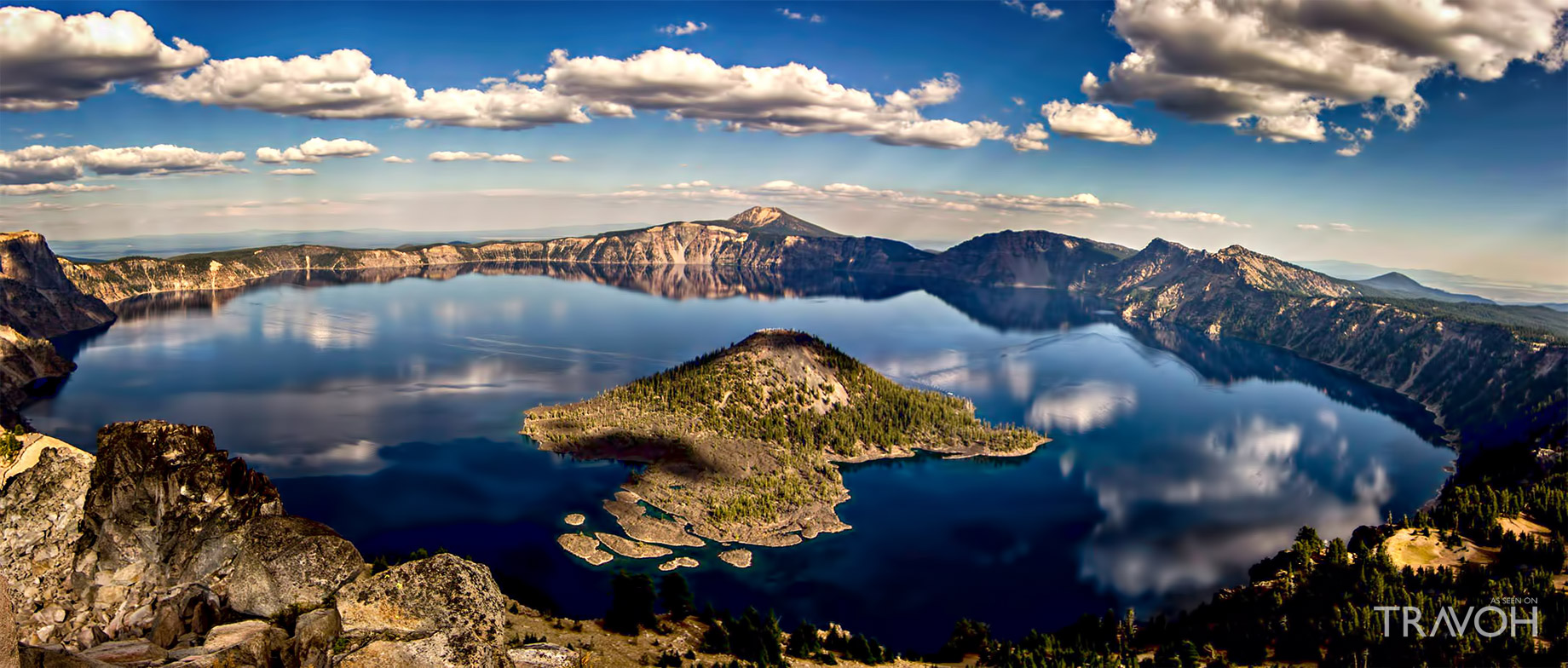
The next time you are traveling in or around Oregon, make sure you visit Crater Lake National Park.The only way to get to this icy lake is through the Cleetwood Cove Trail, a 1.1 mile trail that typically opens in June and drops nearly 700 feet (213.36 m) to the lake shore. It’s considered a strenuous hike, so it’s only recommended for people in good physical shape and with surface water temperatures reaching only 55ºF to 60ºF (12ºC to 15ºC) in the summertime, you will shiver if you jump in for a swim.

